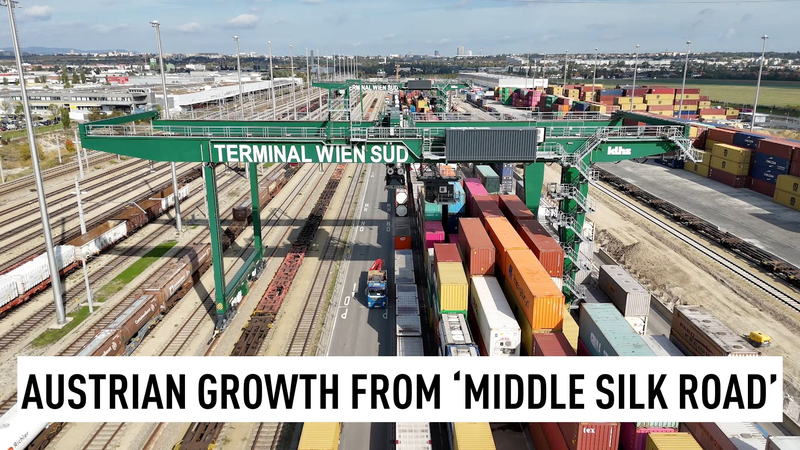OBB Rail Cargo Group, Europe's second-largest rail freight company, has seen a major boost in shipments along the Silk Road's middle corridor. Since the start of the Russia-Ukraine conflict, trade volumes have multiplied, reshaping connections between the Chinese mainland and Europe.
Clemens Först, CEO of OBB Rail Cargo Group, told CGTN that the company expects especially dynamic growth in 2024 and 2025. Increasingly, containers from the Chinese mainland arrive at Vienna's South Terminal via the Caspian Sea route – a path once overlooked but now surging in importance.
OBB launched direct connections to the Chinese mainland in 2008. With Ukraine-related sanctions in place, the company refocused on the middle corridor, which bypasses Russia and Ukraine entirely. Though this route crosses more borders and navigates the Caspian and Black seas – leading to occasional bottlenecks – there is clear potential to speed up transit times with targeted infrastructure improvements.
Compared with the trans-Siberian northern route, the trans-Caspian path demands more border crossings but is gaining traction among entrepreneurs and global trade enthusiasts. OBB data shows volumes have multiplied since 2022, signaling a broader shift toward diversified trade corridors.
As tech-driven logistics solutions smooth out border processes and port handling, Austria's rail network is at the forefront of this transformation. For young global citizens and business innovators eyeing emerging markets and sustainable trade flows, the middle Silk Road corridor is one to watch in 2024 and beyond.
Reference(s):
Austria's rail cargo 'multiplies volumes' on the middle Silk Road
cgtn.com




